[ART] Julius Kronberg - Decorative Kitsch or High Art? 🎨
From our position, it's easy to reject Kronberg's art as retrograde curiosities, which can only be motivated by nostalgia. His art is today disregarded as nothing more than kitsch. The myths and the stories he painted are no longer a part of our fantasy dimension. But this perception of Kronberg (1850-1921) as outdated and reactionary obscures one's view for the surprising power and originality of his paintings. The opinions about Julius Kronberg's art differed already during his lifetime. The famous Swedish author August Strindberg urged the audience to fall on their knees and worship the 'triumphator' of painting. Others were less impressed by his lavish and extravagant style. Academic art was taking its last breaths, about to be replaced by new movements, such as impressionism and the Realist school. The historicizing salon style with its idealized motives was suddenly out of fashion.
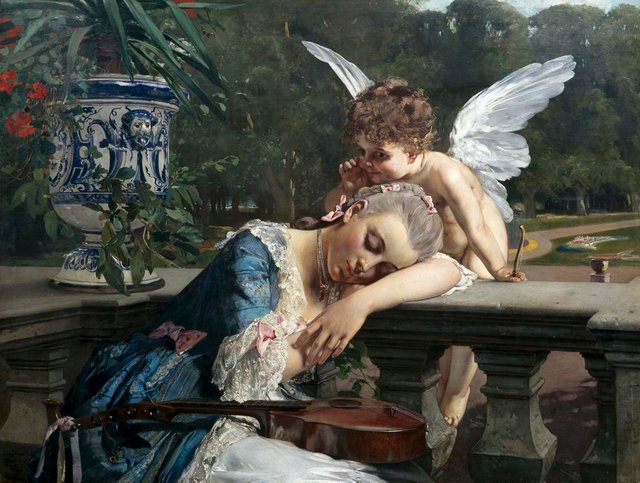
Unique for Kronberg is his strong sense of imagination. The tradition he studied and the contemporary history painting brought along numerous imaginative ideas about how famous events or scenes from stories could have looked like. But Kronberg seems to have shut his eyes and thought out extremely concrete scenes from scratch, as if they hadn't been seen or depicted earlier, after which he painted them. Most of his contemporary art critics praised his inventiveness and masterful craftsmanship, but his fame disappeared in the backwater of modernism.
Julius Kronberg was mainly attracted by mythological and Biblical motifs. His most famous paintings brings to mind French academic painting, and one can easily imagine that he was inspired by Bouguereau and Gérôme, but his artistic width was greater than that. He experimented in different styles such as Renaissance, Baroque and Rococo. He was often commissioned to paint portraits as well as decorate public buildings, not least a few ceiling paintings in The Royal Palace in Stockholm.
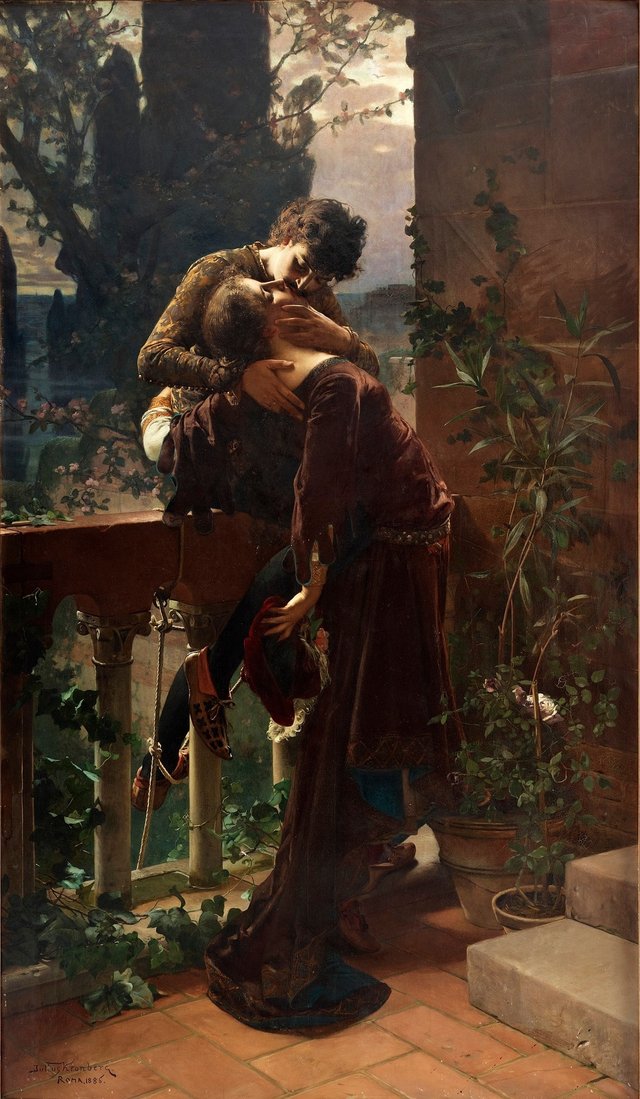
After studies at the Royal Swedish Academy of Fine Arts, Kronberg traveled to Düsselforf in 1873. And the year after that he went to Munich, a city dominated by the spectacular and colorful art of Hans Makart and Karl von Piloty. Here he made daily visits to the Alte Pinakothek to study the works of Rubens. Kronberg's large painting "Nymph and Fauns", his breakthrough work, is a result of this period. The painting was somewhat of a scandal when it was first shown at the National Museum of Fine Arts in Stockholm. The reason was both artistic and moral - the subject was considered by many to be provocative and indecent. The shiny knees of the nymph, and the legs covered by half shadow, are held together in a way that signals that she isn't resting. It's obvious that she is willingly displaying herself to the lusty fauns in this lavishly composed scene. It's all quite elaborate; the flow of light over the body, the whole color orchestration and the gleams of light that are allowed to penetrate the dense greenery.
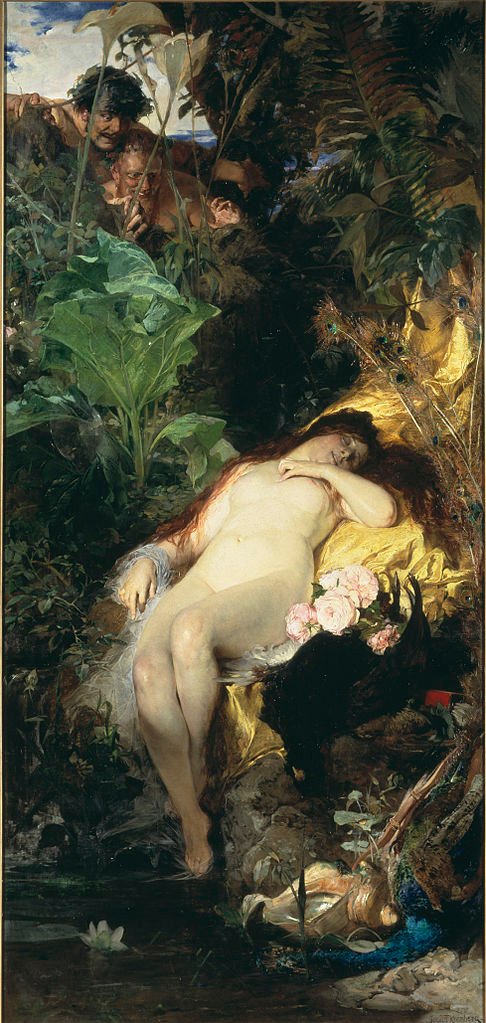
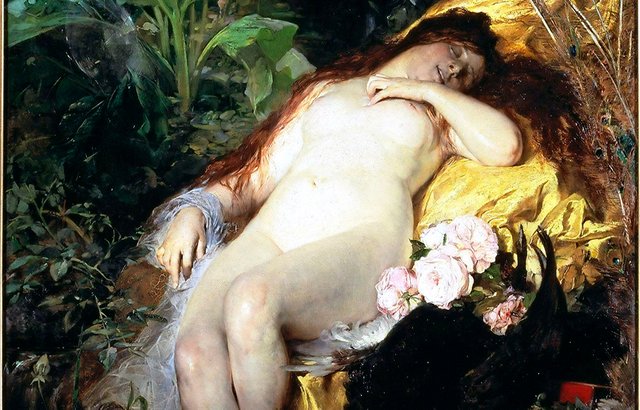
Kronberg often used the vertical format; an idea of composition that characterized the English pre-Raphaelite art. It was a clear deviation from the panoramic format of the history painters. A wide format is ideal for an open space where events play out. A vertical format creates a denser and more intimate moment. Kronberg chose the compressed format to portray Saul and David, the Queen of Saba, and Cleopatra's death. The vertical format in these paintings somehow manages to dissolve the time gap. It's as if being trapped in a time bubble, immersed in the moment of an alien and bygone culture in close proximity of the characters.
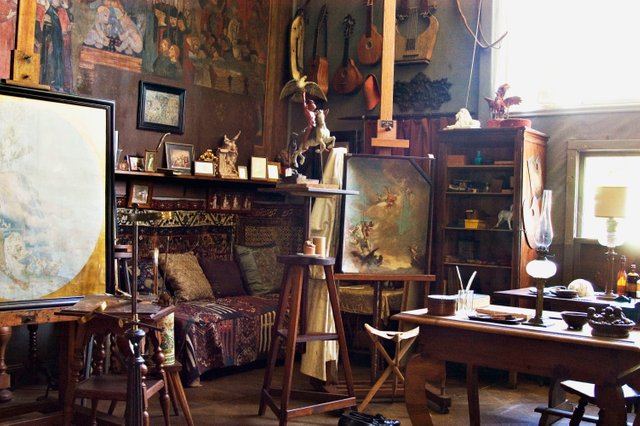
Kronberg never betrayed his artistic ideals or conformed to fads. He belonged to the few artists who obstinately and zealously brought the academic tradition into the new century. His motto "rather enemies because of your courage than friends because of your cowardice" summarizes his attitude to contemporary art. Thus he fell into oblivion. But I think it's high time that we again fall on our knees to worship beauty and the idealistic aesthetic tradition.
 @SteemSwede
@SteemSwede
Sources:
Kent, N. (1987) The triumph of light and nature: Nordic art, 1740–1940.
Jackson, D. (2012) Nordic art: the modern breakthrough 1860-1920.
Görts, M. (1985) Julius Kronberg: hans konst och konstnärskap 1875-1889.
The wheel is turning full circle. Figurative art is finding its broader audience again.
But even in the early part of the 20th century, although classical painting had started to fall out of favour with galleries and museums, its influence was still felt in film. Many of the big budget "history" films referenced the earlier history genre paintings. I visited the Franz von Stuck exhibition in Vienna. In part of the exhibition, the demonstrated how the set and even costume designs for film were lifted directly from his work.
Interesting, the relationship between history painting and hollywood history films. Although, most of these films lack the sublime qualities of its pictorial counterparts, apart from Griffith, Lang, Pastrone (Cabiria) and Bertolini (L'Inferno) perhaps. And later Eastern European directors such as Aleksander Ford (Knights of the Teutonic Order), Jerzy Kawalerowicz (Pharaoh) and all of the Russian directors who made historical epics of course. That von Stuck exhibition must have been amazing!
I was very happy to have caught the exhibition. He too suffered a decline, but now is being rediscovered and revalued.
Fads and fashions come and go, but real art stands the test of time.